 How much time have you spent thinking about how to be a freelance writer?
How much time have you spent thinking about how to be a freelance writer?
If it’s always on your mind, what are you waiting for? Just start.
That might sound too simple if you have a million things buzzing inside your brain about how to be a freelance writer like choosing a niche, finding clients, setting rates, productivity, mindset, writing skills, and more.
But here’s the thing. There’s no better way to learn the business and craft of freelance writing than to jump in, get started, and carve out a niche for yourself.
Take one step, and then another. Move up and earn more. Get a couple of solid writing samples, raise your rates, and keep going.
You can’t do any of that if you’re stuck on waiting to find the perfect path for how to be a freelance writer instead of just getting started.
Be a writer, not a waiter. That’s what you’ll learn from the 25 amazing break-in stories from freelance writers featured in this post. Ready to get started?
1. How I Got Freelance Writing Jobs Worth $15,000 in 7 Days Flat
What if you made up your mind to swear off job boards, online classifieds, and content mills to find freelance writing work? That’s what freelancer Jedha Dening did when she decided to focus all her efforts on one simple marketing task for a week.
2. 5 Karate-Inspired Moves to Beat Fear and Doubt for Freelancers
Freelance writer John Makohen couldn’t stop thinking about the beat-down Daniel Laruso gets in the cult classic movie The Karate Kid. It felt a lot like getting his freelance writing career off the ground. And then he had one of those wax-on-wax-off moments that changed everything.
3. Side Hustle to $50K in 6 Months: This Writer Made It Happen
A little extra money from a freelance side hustle is great. But how do turn a part-time gig into full-time freelancing? Lindy Alexander’s seven-step plan helped her make it happen within six months.
4. The Journey From Bottom Feeder Content Mills to Six-Figure Freelancing
Freelance writer Nicole Dieker knows what it’s like to crank out blog posts for $20 a piece. It’s a soul-sucking, time-consuming experience that doesn’t pay the bills. But it doesn’t have to be that way. Her goal-setting and habit-tracking methods changed everything.
5. Stop Making Excuses: One Writer’s Doubt-Slaying Strategies for Freelance Success
“Believe me. I know what it’s like to keep second-guessing yourself, steer clear of networking and marketing, and get stuck feeling like every other writer is killing it but you,” says freelance writer Tara Brophy. After plenty of struggle and self-doubt, she figured out how to tap into other career experiences to win at freelancing.
6. Pitch Accepted: The Newbie Strategy That Landed a Major Magazine Assignment
Who says you can’t write for a popular, widely-read consumer magazine without a massive portfolio of work?
Douglas Fitzpatrick spent months spinning his wheels getting nowhere. Then he learned how to study a magazine and write an effective query letter to break in.
7. How to Land a $6,000 Contract in Your Underwear with Warm Leads
One of the many perks of being a freelance writer…you can work in your underwear if you want to. But to do that, you need to know how to market your services to book well-paying clients. Freelancer Williesha Morris wasn’t flush with work until she discovered a simple marketing strategy that made her bank account feel better than warm and fuzzy pajamas.
8. Article Writing Secrets of a CIA Analyst Turned Freelancer
Ever wonder what you can learn from your day job that will help you be a better freelance writer? Every job you’ve ever had can help you be a freelance writer. Even if your day job doesn’t involve writing, your work can connect you with sources, build a referral network, and fill your brain with niche story ideas. Freelancer Abigail Keyes took what she learned as a CIA Analyst to launch her freelance writing career.
9. 5 Steps Older Workers Can Use to Launch a Freelance Writing Career
Think you’re too old to launch a freelance writing career? Think again. Debra Giuliano spent 30 years working in banking and law before she made the leap to full-time freelancing. When her day job closed its doors before she was ready to retire, she had to figure out how to make it happen.
10. The Unusual Business Writing Niche That Pays $500 an Hour
Kendell Rizzo go started like a lot of freelance writers by taking low-paying gigs and working with flaky clients. She was willing to hustle, but she didn’t see a clear path to earning pro rates. And then something happened that tipped her off to an untapped niche and plenty of prospects willing to pay top dollar.
11. Writing for Money: The Path to Your First $3,000 Month
When Kaitlin Morrison worked in retail running a cash register, stocking shelves, and talking to customers, she always had a manager hovering nearby telling her what to do. But when she made the leap to full-time freelancing, she needed to figure out her own way of doing things. After plenty of trial and error, she figured out a five step process to move up and earn more as a freelance writer.
12. 4 Top Obstacles Young Writers Face — and How to Beat Them
If you don’t have a stellar portfolio of work, how are you going to get well-paying gigs? And if you don’t have a lot of experience, how are you going to land assignments to build a better portfolio? That’s enough to keep a lot of freelancer writers from ever starting. As a young freelance writer, Christina Vanvuren faced those same kind of frustrations until she figured out how to overcome the four obstacles blocking her path to earning six figures.
13. Getting Freelance Writing Jobs at $250 an Hour — The Brainy Way
When long-time accountant Tammy Farrell left the business for freelance writing, she had her sites set on earning pro rates from day one. Instead of following the common path of working for low-paying clients and moving up, she discovered a Freelance Writers Den Bootcamp that helped her score her first client at $250 an hour.
14. How to Become a Freelance Writer — Even if You’re Living Paycheck to Paycheck
When Molly Carter reached a tipping point at her day job in addiction services, she knew she had to make a change. Her plan…full-time freelancing. With three kids, a mortgage, a car payment, and another family business just getting started it wasn’t easy to make the move. But she made it work. Here’s how:
15. How I Quintupled My Freelance Writing Income in 1 Year
The first time you make money from a freelance writing assignment, it’s pretty exciting. Even if the paycheck isn’t huge. But if you’re the kind of person who wants to move up, earn more, and enjoy the freelance life, you won’t settle for earning just enough to get by. Here’s how Alison Lueders gave her fledgling freelance writing career a boost to 5x her income in one year.
16. How a Newbie Blogger Negotiated a 100 Percent Raise
How do you go from charging $50 per blog post to $100 per blog post? Just ask. After landing her first gig, freelancer Amy Hardison wrote a lot of great content for her client. When she decided it was time to move up and earn more, she didn’t drop this client for another. Instead, she proposed a 100 percent raise and got it. Here’s how:
17. From Content Mills to Writing for a TV Network in 2 Months
Did you know it takes 7,143 words to make $100 if you’re writing for 1.4 cents per word? That’s what Patrick Hearn was earning three years out of college. And it wasn’t sustainable. Instead of giving up, he developed a five-step strategy that helped him land a $500 script-writing gig that transformed his freelance writing career.
18. 6 Basic Steps to Score Your First Freelance Writing Gig
You’ll never feel 100 percent ready to put yourself out there, says freelance writer Richard Rowlands. But you can’t let that stop you from getting into the game. When another writer challenged him to carve out a plan to earn his first $1,000, Rowlands created a game-plan to make it happen.
19. One Shy Writer’s Lazy LinkedIn Strategy for Landing Great Freelance Clients
If you think you have to be an outgoing extrovert to make a living writing, think again. If you’re a little shy or a bit of an introvert, it’s hardly an excuse to keep you from being a freelance writer. Here’ how self-described shy freelancer Amy Dunn Moscosco learned to use LinkedIn to go from earning $200 a month to $7,500.
20. How I Got My First $10,000 Freelance Writing Gig
Do you really need to have a niche when you’re starting out? You could try and be a generalist and write for a broad range of niches and industries. But when Erin Walton was just starting out, she discovered that choosing a niche can be a highly effective way to fast-track your freelance writing career.
21. How a $5 Article Writer Landed a $900 Article
What’s the difference between earning $5 per article and $900 per article? Freelance writer Thomas Hill knows. It wasn’t that long ago that he was writing for bid sites and taking gigs from online job boards. But he wanted to make a living writing. Instead of waiting around for something magical to happen, he took a few specific steps to move up, earn more, and start landing well-paying feature writing assignments.
22. How I Found a Steady Stream of Writing Clients in 9 Months Flat
There’s more than one way to build your career as a freelance writer when you’re starting out. Leslie Jordan Clay was a part-time freelancer with a regular job for years. When she finally decided to turn it into her full-time gig, she booked thousands of dollars in ongoing work with a handful of niche clients within the first nine months.
23. One Writer’s Crazy Quest to Earn Six Figures–Working Part Time
You can earn six-figures in a lot of professions other than freelance writing. But you’ve can’t do than in many career fields working very part time hours. But when Elizabeth Hanes, RN, decided to jump into freelancing, that was her goal. Her marketing strategies helped her book $8,500 in assignments. Here’s how:
24. How This New Freelance Writer Made $11K in Her First Two Months
Make $11,000 in your first 60 days as a freelance writer. If you’re thinking about how that’s possible writing for content mills and bid sites, your brain might explode. But it’s totally possible, says freelance writer Jane Callahan. Here’s what her marketing plan and hustle looked like to make it happen.
25. One Writer’s Fear-Busting Journey to $1,500 a Month in Blogging Gigs
If Steph Weber let being a stay-at-home mom be an excuse for not getting started, her freelance writing career might not have taken off for 18 years. Fortunately, she got tired of waiting around for that to happen, faced her fears, and got busy. After that, it didn’t take long to book $1,500 a month writing blog posts.
Be a writer, not a waiter
If you want to learn how to be a freelance writer, stop waiting around for some magical event, sign from the universe, or perfect circumstances to get started. You’ll be waiting a very long time. Instead, just get started. Find your first client, and go from there. That’s how every one of these 25 writers were able to break in, move up, and earn more.
What do you need help with to be a freelance writer? Let’s discuss on Facebook or LinkedIn.
The post 25 Amazing Break-In Stories on How to Be a Freelance Writer appeared first on Make A Living Writing.
from Make A Living Writing https://ift.tt/2wnpvCA
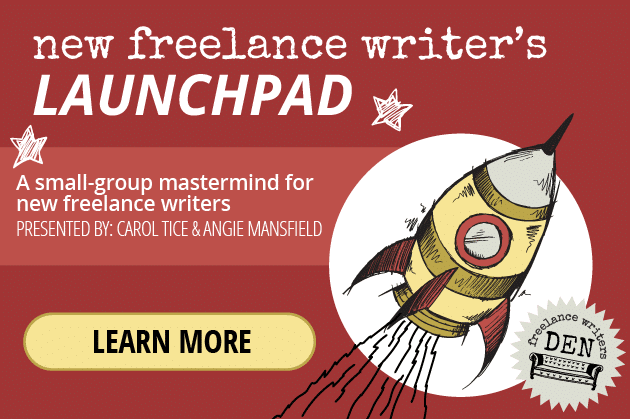
 Photo by
Photo by 











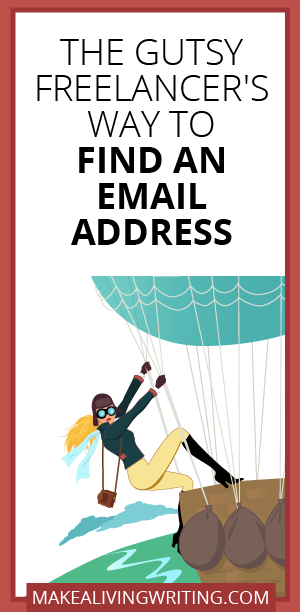 Ever struggled to find an email address for a prospect?
Ever struggled to find an email address for a prospect?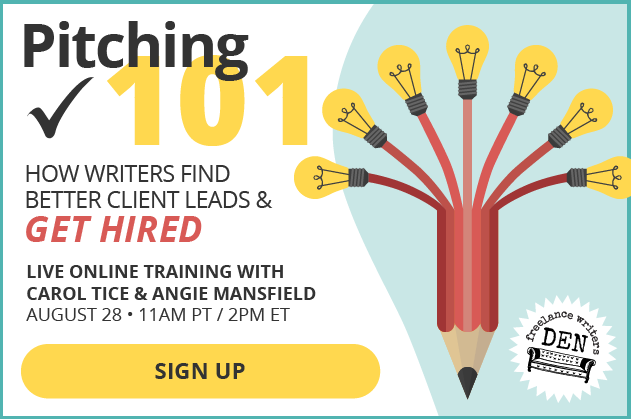
 Photo by
Photo by  Do you know how to get steady, high-paying clients as a freelance writer?
Do you know how to get steady, high-paying clients as a freelance writer?











 Note: In this post from the past, you’ll learn about one easy method to come up with story ideas that never gets old.
Note: In this post from the past, you’ll learn about one easy method to come up with story ideas that never gets old.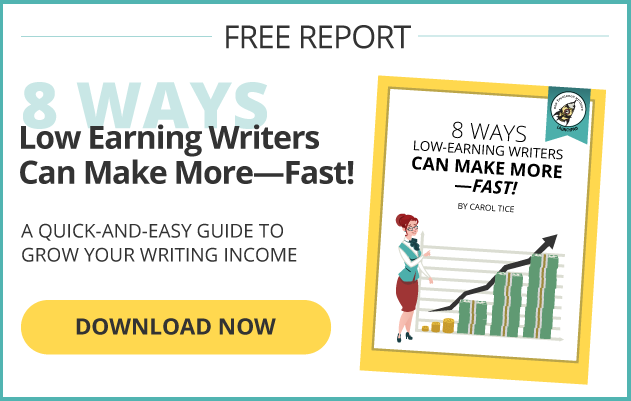
 Ever wonder where you can land science writing gigs?
Ever wonder where you can land science writing gigs?
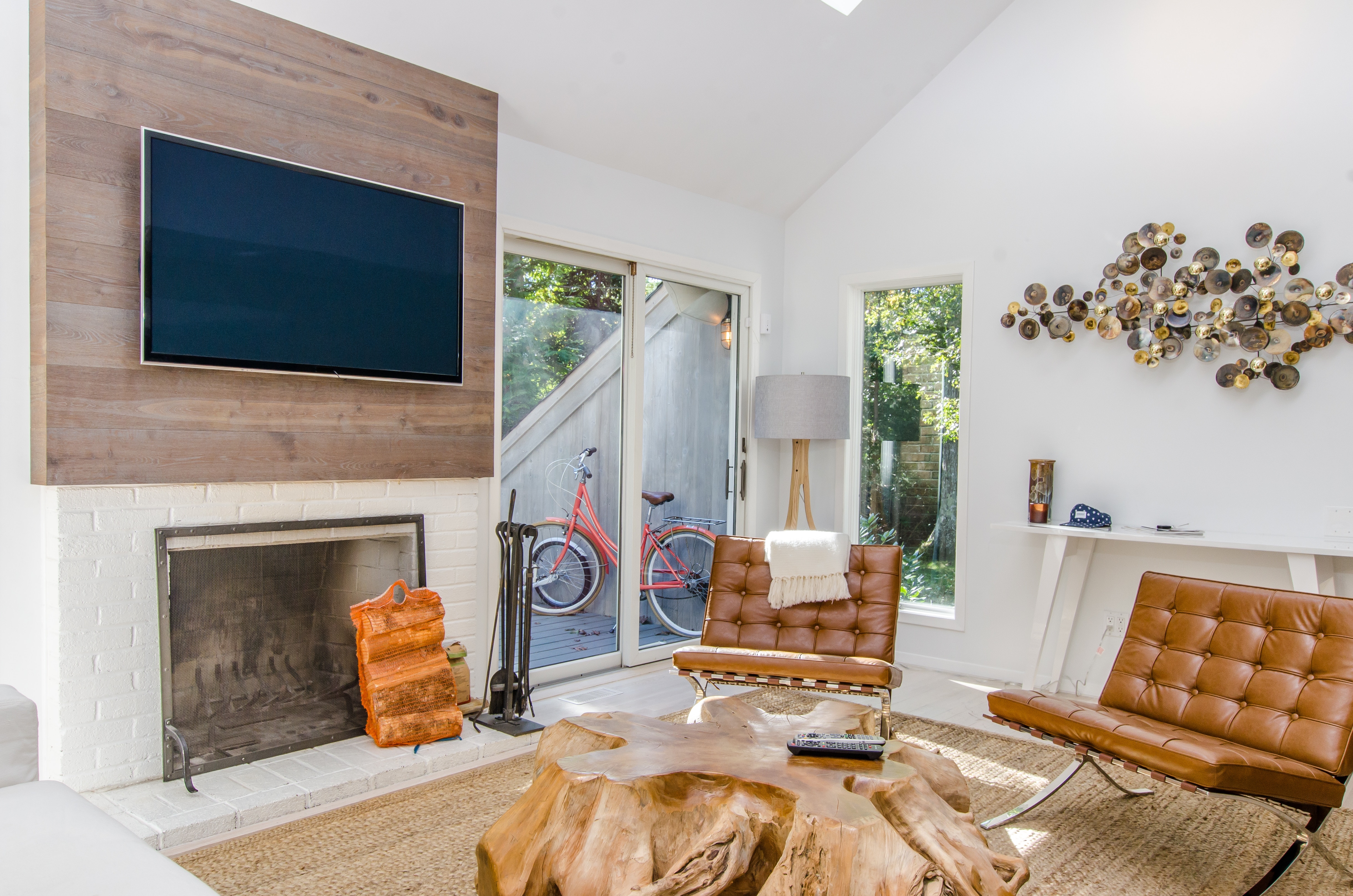 Photo by
Photo by